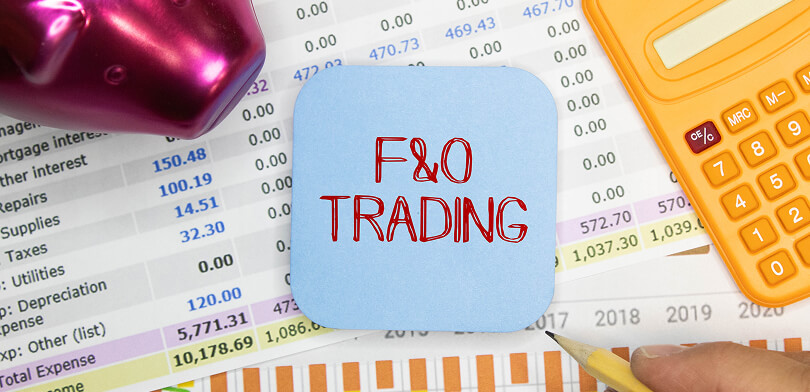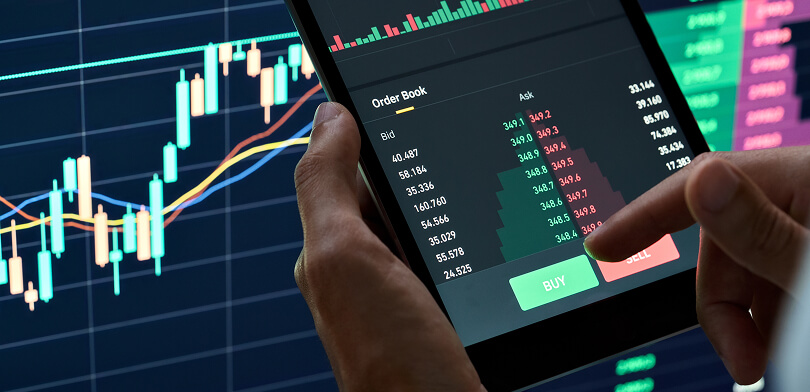- Last Updated: Jun 12,2024 |
- Religare Broking
Margin funding, also known as leveraged trading, allows investors to enhance their market participation by borrowing funds to increase their investment positions. By understanding the meaning of a margin account, investors can trade with borrowed money and maximise their potential returns without committing a large amount of their capital.
However, consider the margin funding interest rate and the associated risks of leveraging financial positions. In this post, we will discuss the details of margin funding and explore its implications for investors seeking to utilise financial leverage in the market.
- What is Margin Funding in Trading?
- How Does the Account Work?
- Margin Funding Components
- Margin Funding Benefits
- Who is Eligible for Margin Funding?
- Interest Rates for Margin Funding
- Conclusion
Topics Covered:
What is Margin Funding in Trading?
Margin funding refers to borrowing funds from a broker to purchase stocks or other financial instruments to increase returns on investment. It involves opening a margin account, allowing investors to access borrowed capital to supplement their funds.
The margin account acts as collateral for the borrowed funds and provides the flexibility to trade larger positions than possible with solely personal capital.
This concept of leveraging one's investments can amplify potential gains, but it is important to note that it also increases the level of risk. Investors must carefully consider the margin funding interest rate and monitor market fluctuations to assess the feasibility and potential returns of effectively leveraging their positions.
How Does the Account Work?
A margin funding account operates through a series of established procedures and requirements. To set up such an account, an investor must first meet the eligibility criteria specified by the brokerage firm. This typically involves providing personal identification information, completing necessary paperwork, and agreeing to terms and conditions.
Once the account is established, investors can begin trading on margin by depositing a minimum amount of capital, known as the initial margin. This initial margin is a percentage of the total value of the purchased securities.
In addition to the initial margin, investors must maintain a certain level of funds known as the maintenance margin. This maintenance margin is calculated as a percentage of the total value of the securities held in the account. It acts as a safety net to ensure the investor has sufficient funds to cover potential losses.
Failure to meet the maintenance margin requirement triggers a margin call, where the investor must deposit additional funds or sell off securities to bring the account back into compliance. It is important to note that a margin call can have significant implications, potentially leading to forced liquidation of assets and incurring losses.
Margin Funding Components
In margin funding, there are several key components that investors should be familiar with. The initial margin requirement is the minimum amount of capital an investor must deposit to initiate trading on margin. This requirement is usually expressed as a percentage of the total value of the purchased securities. It serves as collateral and helps protect the brokerage firm from potential losses.
The maintenance margin is another important component of margin funding. It represents the minimum level of funds that an investor needs to maintain in their margin account. This requirement is also expressed as a percentage of the total value of the securities held in the account.
A margin call is triggered when the value of securities in a margin account falls below the maintenance margin. A margin call is a demand from the brokerage firm for the investor to deposit additional funds into the account to bring it back up to the required maintenance margin level. Failure to meet a margin call may result in the brokerage firm liquidating some or all of the investor's positions to cover the losses.
Additionally Read: What is Demat Account?
Lastly, the leverage ratio plays a significant role in margin funding. It refers to the amount of borrowed funds an investor can access relative to their initial margin deposit. Higher leverage ratios allow investors to control larger positions with less capital but also increase the risk of potential losses.
Margin Funding Benefits
By understanding the benefits of margin funding, investors can make informed decisions about utilising this financial leverage tool in their investment strategies.
- Increased buying power
- Potential for higher returns
- Flexibility to take advantage of market opportunity
- Diversification of portfolio
- Access to short-selling
- Potential tax advantages
It allows investors to amplify their purchasing power by borrowing funds from the brokerage firm, enabling them to buy more securities than they could with their capital alone.
By leveraging their investments, investors can generate higher returns if the value of the securities in their portfolio increases.
It allows investors to seize market opportunities without committing their full capital upfront. They can take positions in securities they believe will perform well without tying up all their available funds.
Investors can diversify their portfolios more extensively by expanding their holdings across a wider range of securities. This diversification can help spread risk and potentially enhance returns.
It also allows investors to engage in short-selling, where they can profit from the decline in the value of securities by borrowing and selling them and then buying them back at a lower price.
In some jurisdictions, the interest paid may be tax deductible, providing potential tax advantages for investors.
.Who is Eligible for Margin Funding?
To be eligible for margin funding, investors must meet certain criteria set by brokerage firms and regulatory guidelines. Firstly, they must open a margin account, which allows them to borrow funds for trading purposes. This account requires fulfilling specific financial requirements, including maintaining a minimum account balance and meeting margin maintenance requirements.
Further, investors must enter into a margin agreement with their broker, which outlines the terms and conditions of margin trading. Brokers assess an investor's suitability for margin trading by evaluating their investment experience, risk tolerance, and financial resources.
This assessment helps ensure investors have the knowledge and financial stability to handle the potential risks of margin trading.
Interest Rates for Margin Funding
One crucial aspect to consider when engaging in margin funding is the interest rates associated with margin loans. These rates are determined by various factors, including the terms set by the broker, prevailing market conditions, and the amount borrowed.
Different brokers may offer different interest rates, so comparing and evaluating these rates before entering into a margin agreement is essential. Also, market conditions can impact interest rates, as they fluctuate based on supply and demand dynamics.
Finally, the amount borrowed also plays a role, with higher loan amounts often resulting in higher interest rates.
Conclusion
Margin funding is a financial tool that allows investors to borrow funds from a brokerage firm to purchase securities. While it can provide the opportunity for higher returns, it also comes with a high level of risk and should be approached cautiously. Investors must thoroughly educate themselves on the intricacies of margin funding and carefully assess their financial situation before engaging in this type of trading.
Margin funding allows traders to borrow funds from brokers to increase their purchasing power in the market, amplifying potential profits or losses. Explore margin funding opportunities and manage your margin accounts efficiently by considering the benefits of opening a new demat account, streamlining your access to borrowing facilities and trading platforms.
You May Also Like










